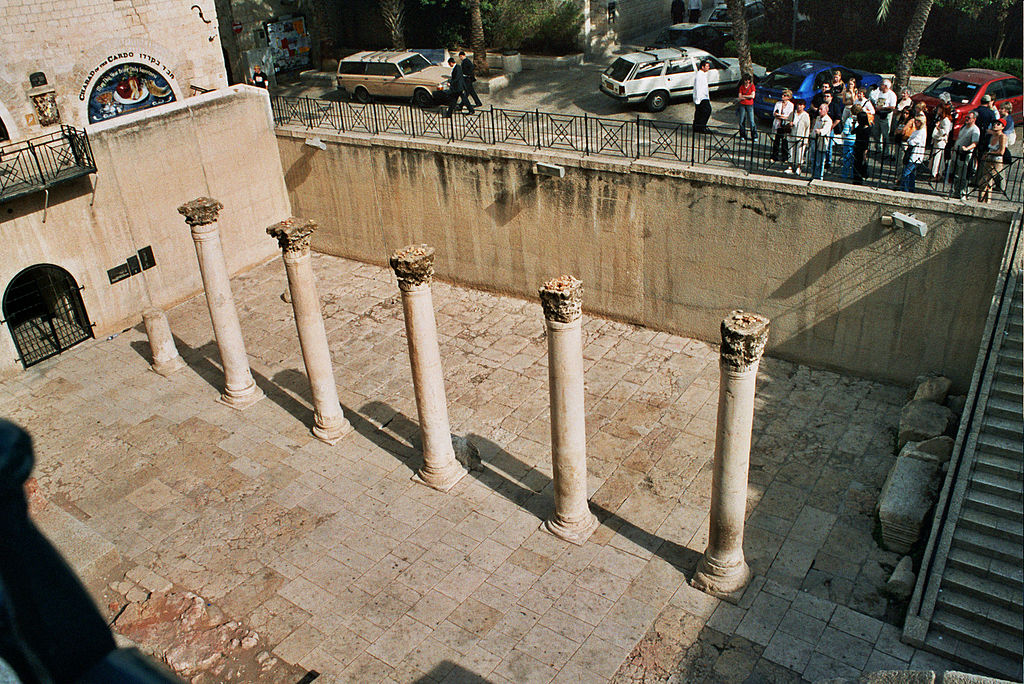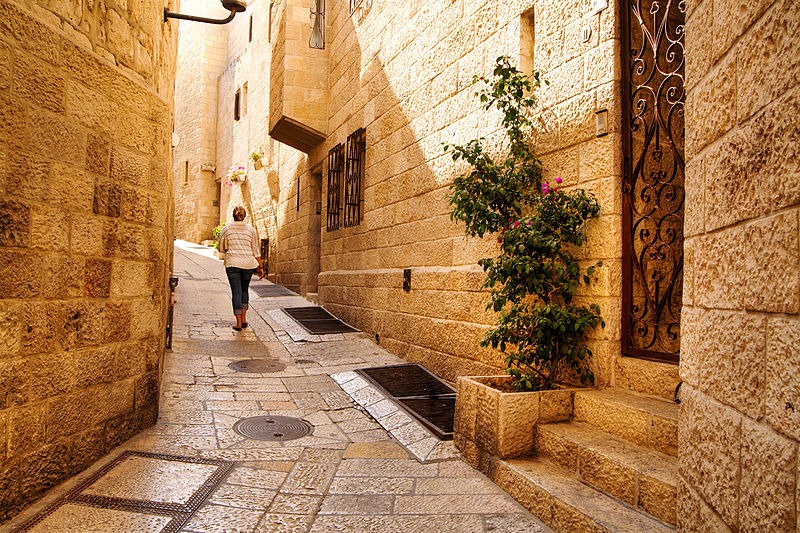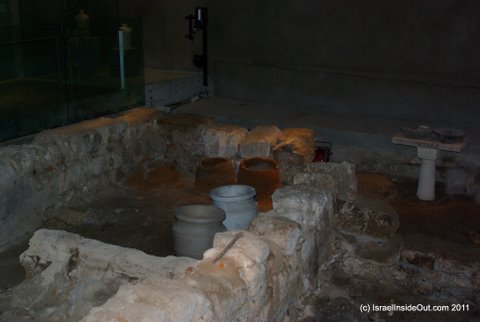Introduction to the Jewish Quarter
The Jewish Quarter is situated on the southern side of the Old City of Jerusalem. This area began becoming the Jewish Quarter in the middle of the 13th century C.E., when the Spanish rabbi and philosopher Nachmanides reestablished Jerusalem’s Jewish community following the Crusades.
The first urban settlement in the area of the Jewish Quarter began when King Hezekiah extended Jerusalem’s walls westwards to encompass the western hill in the 8th century B.C.E. in preparation for an Assyrian onslaught. Its first residents were apparently Jewish Israelite refugees fleeing Senacherib’s campaigns. Remnants of this wall, known as the “Broad Wall” can be seen on Plugot Hakotel St.
In the 6th century B.C.E., the Babylonians broke into the city through a gate the ruins of which, known as the Israelite Tower, lie beneath today’s Jewish Quarter. The Hasmoneans built Jerusalem’s “First Wall”, still visible in the Cardo, along the northern edge of today’s Quarter. In the first century the area was known as the Upper City and was home to Jerusalem’s affluent elite, among them wealthy priests (kohanim). The Upper City met a fiery end on the 8th day of the Hebrew month of Elul in 70 C.E.
The area apparently wasn’t resettled in the Late Roman period, Aelia Capitolina being an under-populated city. In the 6th century the Byzantine Emperor Justinian extended the Cardo southwards and built a massive church, known as the Nea, where the Jewish Quarter’s parking lot stands today. Ruins of the Nea Church can be seen where the city wall meets the asphalt road just east of the car park and under the elementary school in Batei Mahse Square.
The Jewish Quarter fell to the Jordanian Arab Legion in the course of heavy fighting, during the War of Independence. The neighborhood was subsequently destroyed by Jordanian forces and Palestinian irregulars in the aftermath of Israel’s War of Independence. The Jewish Quarter was rebuilt following the reunification of Jerusalem in the Six Day War. Reconstruction has been accompanied by extensive archaeological excavations and major conservation efforts.
There are lots of worthwhile sites in the Jewish Quarter. Here are a few recommendations, but don’t hesitate to take a guided tour. We believe that the Jewish Quarter is of interest to children and is passable with assistance to wheelchair visitors. (The surface is stone – rather than asphalt so it is not a smooth ride and can be a little slippery on the steep inclines especially when wet).

The Cardo
The Cardo was Jerusalem’s main street 1500 years ago, and is now one of the most interesting sites in the Jewish Quarter. See our guide to The Cardo.

Hurva Synagogue
The Hurva was the largest building in the Jewish Quarter prior to its destruction during Israel’s War of Independence. For decades only a lone arch remained standing, as symbol of the Quarter’s destruction by the Jordanians. It has just been rebuilt and rededicated and it once again dominates the Jewsih Quarter. Please see our guide to The Hurva.

Ramban Synagogue
Lying immediately adjacent to the Hurva on the south is the Ramban Synagogue, named for the Spanish rabbi and philosopher Nachmanides, also known by his acronym the Ramban.
In 1267 Nachmanides reestablished Jerusalem’s Jewish community after the Crusades. In a letter to his son he wrote “we have found an abandoned house built on marble pillars and with a beautiful dome, and taken it as a synagogue, for the city is derelict and whoever wants to take possession of its ruins may do so…” In doing so, Nachmanides not only reestablished Jerusalem’s Jewish community, but also determined where the Jewish quarter would be located as Jews returning to the city settled around the synagogue.
Opposite the Ramban Synagogue to the south is a small elevated platform at the entrance to a shop. To the east of the shop is elegantly decorated door of the Beit El Yeshiva – Worth having a look.
Broad Wall
The Broad Wall on Plugot Hakotel St. is the one of the oldest structures discovered in the neighborhood. It was built in the late 8th century B.C.E. when King Hezekiah extended Jerusalem’s walls to enclose the western hill in preparation for an Assyrian siege.
At the foot of the wall in the northwest are the ruins of a house contemporary to Hezekiah, but destroyed and left just outside the city walls by the construction of the Broad Wall. Commenting on the walls construction the prophet Isaiah wrote: “And you have number the houses of Jerusalem, and you have broken down the houses to fortify the wall”.

Shonei Halachot Street
Just east of the Broad Wall is a small square from which Shonei Halachot Street descends to the east. We recommend walking down to the bottom of this street and looking back up it. The arches of partially covered Shonei Halachot St. are simply one of the most aesthetically pleasing alleyways in the Old City.
Western Wall Observation Point
From the bottom of Shonei Halachot St. follow the stairs in the southeastern corner over a small rise to reach a balcony with an excellent view of the Western Wall below.

Herodian Quarter (Herodian Mansions)
The Herodian Quarter is located on Hakaraim (Karaite) St. just off the main square of the Jewish Quarter on its southeast corner side. After paying admission (ask about a combined ticket that includes the Burnt House) a set of stairs takes you three meters below the street level of today to the ruins of mansions belonging to affluent Jerusalemites in the late Second Temple Period (1st century).
The ruins include ritual baths, mosaic pavements, along with the remains of frescos, stucco and even ash from the destruction of the neighborhood in the year 70 C.E. The presence of a large number of ritual baths in these mansions has raised the possibility that these may have been the homes of wealthy priests (kohanim). Other artifacts displayed include pottery, coins, stoneware and vessels reflecting 1st century Jerusalem’s contacts with other countries in the Mediterranean region.

Burnt House
Situated between various eateries and souvenir shops on Tiferet Israel St, is the Burnt House, the ruins of a home and incense workshop from the 1st century. Here too the site lies below the street level of today. It includes an audio visual presentation about the site and the fall of Jerusalem in the year 70 C.E. Among the artifacts found and now displayed at the site is a weight bearing the words Bar Kathros. Kathros is the name of a priestly family mentioned in the Talmud.
See also Things Not to Miss in the Jewish Quarter of Jerusalem

